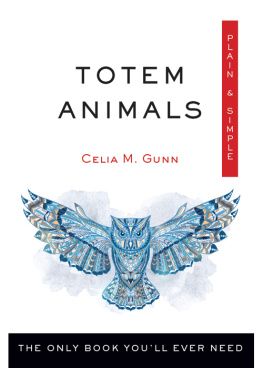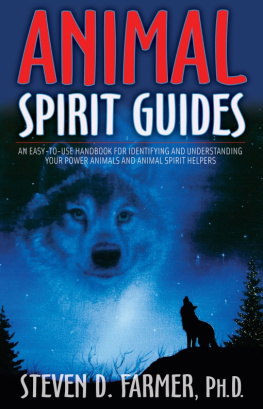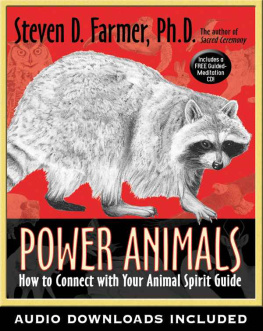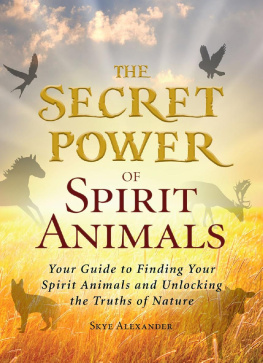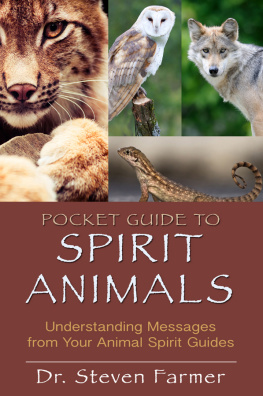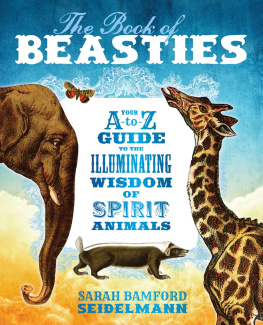
Copyright 2010, 2016
by Celia M. Gunn
All rights reserved. No part of this publication may be reproduced or transmitted in any form or by any means, electronic or mechanical, including photocopying, recording, or by any information storage and retrieval system, without permission in writing from Hampton Roads Publishing, Inc. Reviewers may quote brief passages. Previously published in 2010 as Simply Totem Animals by Zambezi Publishing Limited, Devon, UK.
Permission to quote from Barbara Hand Clow, The Mind Chronicles, Bear & Co. 2007, is gratefully acknowledged.
Illustrations Bigstock.com and may not be reproduced without permission.
Cover design by Jim Warner
Interior design by Kathryn Sky-Peck
Hampton Roads Publishing Company, Inc.
Charlottesville, VA 22906
Distributed by Red Wheel/Weiser, LLC
www.redwheelweiser.com
Sign up for our newsletter and special offers by going to
www.redwheelweiser.com/newsletter/
ISBN: 978-1-57174-748-8
Library of Congress Cataloging-in-Publication Data available upon request
Printed in The United States of America
MG
10 9 8 7 6 5 4 3 2 1
www.redwheelweiser.com
www.redwheelweiser.com/newsletter
Contents
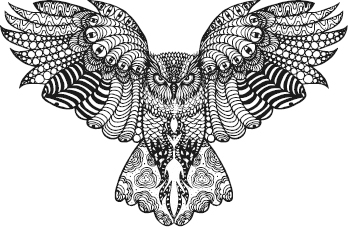
Dedicated to Wolf, Crow, Buzzard, Blackbird, Bee, Dragonfly and Owl, honored guides; and to Anthony, Cindy, Grethe, Jane, Helen, Paul, Tipi, Doug, Trish and Paul: true friends at a special time.
Ask the animals, and they will teach you; or the birds of the air, and they will tell you; or speak to the earth, and it will teach you; or let the fish of the sea inform you.
Job 12:78
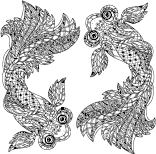

INTRODUCTION
What Is a Totem Animal?
D eeply ingrained in the tradition of North American Indians, who have protected the concept of totem animals to this day, the word totem is attributed to the Ojibwa tribe. According to the dictionary, a totem is an object, usually an animal or a plant, that serves as a revered ancestral emblem of a family or clan. Totem animals are used for personal guardianship as well; in this guise, however, totem animals are not passed down through the family or clan but are chosen individually.
To the Athabascan Indians of Canada, medicine is the art of connecting with a guardian or totem animal spirit. In the Athabascan tradition, this process is usually undertaken around the age of five years. The ritual is in the form of some sort of deprivation, such as a fasting quest, and the first image that comes to the child is the guardian spirit that will never leave. It might appear in the form of an animal, a bird, an insect, a reptile, a plant, or another spirit guise, and a bond is formed between the child and the guardian spirit that involves a certain interaction, with rights and duties. The totem is said to carry special influence over natural or magical forces, enhancing personal power, healing, and understanding. For the rest of his or her life, the child wears an item representing the guardian spirit: a piece of fur, a feather, a tooth, a symbol cut into wood. Without the guardian spirit it is believed that a person will die. While this first connection is of primary importance, other guardian spirits might be acquired throughout a lifetime.
Although the word totem is associated with North American Indians, the concept is found in some form in nearly all cultures. The idea of spirit guides speaking to and assisting humans through animals and birds is prevalent throughout the world. While some people might be more comfortable with the term guardian angel than with spirit guide, others connect more strongly with the idea of animal energy. Many people, however, flatly dismiss the idea of having an animal or a bird as a personal spirit guide. A fantasy; superstition, they might say. We know better because science has told us that we are conscious, rational beings, and animals are not.
Yet, the idea that humans are superior to animals seems to have come at a great price. Having set ourselves apart from the natural kingdom, we have alienated ourselves from the very planet that we live upon. Having judged the instincts of animals as somehow inferior, we have come to distrust our own instincts. In so doing we have lost our own inner knowing, the knowing of intuition. Inner knowing is what helps us be truly creative and to make the leap beyond worry, fear, and pain; otherwise, we must make a rational decision about every step we take in life.
As well as helping you personally, coming to know and work with your totem animal will help you live in a harmonious relationship with the natural world and will link you to a long, rich tradition that connects us all to the sacred web of life.
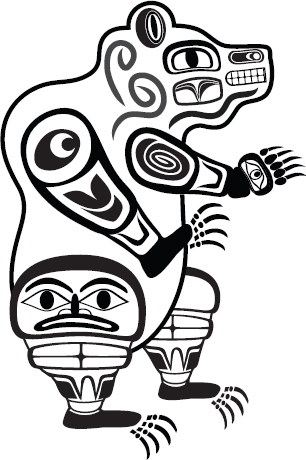

Totem Animals Around the World
L ong ago, our ancestors held all creation sacred. They understood that we are part of nature, that nature is part of us, and that we have an intimate relationship with the animals and plants with which we share the earth. Our ancestors drew no distinction between the natural and the supernatural, and the same holds for many indigenous cultures today. Reverence for the natural world is evident in most global traditions. Animals are beautifully and vividly portrayed in ancient cave paintings and petroglyphs all over the world, most famously in Lascaux and Chauvet, France. Sometimes people are portrayed as part animal; for example, a man with antlers. Many origin or creation myths tell of a time when the boundary between human and animal was thin, when an animal could become a human or a human could turn into an animal.
North American Indian creation stories describe animals and plants as the First People. The First People jointly agreed to help humankind, whom they saw as weak and helpless beings, by sacrificing their lives to allow the humans to live. As part of this exchange, humans were endowed with the ability to communicate with the spirits of the plants and animals. According to these traditions, this capability brought Humans into the Order of Life.
It is believed that animal sounds are the origins of language, and many cultures have traditions that relate how animals taught us the skills we need for living. There are many tales of humans watching and learning from animal behavior. One of these tales explains that American Indians call the wolf brother, since it was the wolf who taught them how to hunt. Native Americans understood that animals have wisdom to impart and can teach us; so to Native Americans, animals had status.
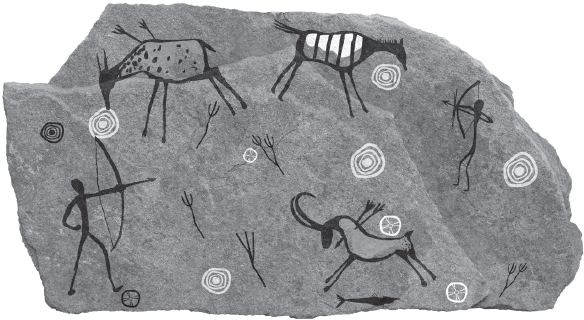
All over the world, ancient societies passed down legends, songs, and stories that prove the strong link that connects animals, gods or spirits, and humans. An inspiration to us all, they tell of a time when the spirits of animals communicated with humans, or the spirits or gods communicated with humans through animals. From Europe to Siberia, North America to China, this is part of a tradition that began during a magical time when humans were at peace with animals and when they understood each other's language.
Next page
